Goodson Cleared In BCPD Internal Probe: Did Wagon Driver Get Away With Killing Freddie Gray?
Posted by David Adams on November 9th, 2017
Now that a Baltimore City Police Department internal probe of officer Ceasar Goodson has concluded with his acquittal for his alleged misconduct in the death of Freddie Gray, outrage and other questions continue to linger about how Gray sustained what would be fatal injuries on the day he was arrested on Baker street in West Baltimore several years ago. A tragic death that resulted in city wide protest and riots that made national media, has in many ways divided Baltimore’s citizens, politicians, clergy, and its police department.
Authorities claim Gray who had many arrest for petty drug soliciting, intentionally inflicted injuries to himself to avoid having to go to a lockup at central bookings, a tactic police say Gray was known for. Despite amature video recorded by a witness’ cellphone at the scene of Gray’s arrest going public, and depicting Gray seemingly in pain and discomfort, police say it was all an act. Subsequently, Gray was driven around in a police wagon while Goodson made at least 5 stops before cops realized that he was unconscious and not breathing. Gray would succumb to a severed spinal cord a week later.
His death highlighted a long standing claim of police brutality by citizens from many communities just like Sandtowne Windchester where Gray was raised and lived. Anger over yet another unjust killing of a black man while in police custody ushered in tremendous fallout from a public with visceral hatred of its police force, and painted a backdrop of arson, violence, and youth clashes with police throughout the city. In a scene resembling events in Baltimore that followed the assassination of Dr. Martin Luther King Jr., Baltimore in many respects had seemingly grown impatient with its city government’s lack of accountability of its heavy handed police force.
While the media, police, and city government chose to focus on the unrest that followed Gray’s death by citizens during the riots and uprising, the central issue of exactly what happened to Freddie Gray became lost in a vacuum of political scapegoating and finger pointing which decried the obvious deficiencies within Baltimore’s social, economic, and political landscape that hand been simmering for decades. The criminal cases of police officers involved in Gray’s arrest being dismissed by Baltimore’s top prosecutor Marilyn Mosby, only added fuel to a fire that has yet to be extinguished in a city where many of its citizens are illiterate, and remain angered by policing that has historically brutalized them.
In a October 2015 blog article, A “Chink In The Armor” For BCPD Officers Charged With Killing Prisoner: Cop’s Account May Solidify State Case In Freddie Gray Death, I outlined the timeline of Freddie Gray’s arrest by city police. In the breakdown of the various stops that officer Goodson made, the stop at Freemont and Mosher streets is perhaps the most interesting. In a surveillance video obtained from a corner convenience store during a separate investigation by the Baltimore city sheriff department which was ordered by Mosby, Goodson is captured stopping the vehicle and going into the back of the wagon. Police say he was simply checking on Gray, but it is quite plausible that Gray may have sustained his fatal injuries during that time.
Gray who many experts argue was a victim of “contempt of cop” (targeted by police who have arrested him a number of times without meaning punishment) had been placed in the police wagon head first and faced down. Goodson who probably was annoyed by Gray’s behavior in the rear could have went inside of the wagon and stomped on Grays neck causing his spinal cord to be severed, and while there is no proof of such a claim in my argument, Goodson having made that particular stop (a stop that would not have been brought to light if Mosby hadn’t ordered a parallel investigation by the sheriff’s office) should have been under intense scrutiny to determine why he stopped. Lt. Rice had just ordered Goodson to stop and allowed officers to remove Gray to place shackles on him before being transported to Central Booking.
The Freemont and Mosher stop and the Druid Hill Avenue stop are both suspicious. They leave tremendous suspicion on police interaction with Gray during these time periods, while no officer deemed it necessary to seek medical attention for an arrestee in their custody. All of the stops made by cops while going in and out of the back of the wagon isn’t normal behavior or procedure. It is however common for Baltimore police to stop and pick up other prisoners while in transit to Bookings, but very unusual and suspect for a wagon to turn around in travel in an opposite direction to make a pick up, especially when the wagon is merely blocks away from Central Booking when a call is put out for a transport vehicle.
Some say Goodson was a scapegoat and simply transported Gray, while the injuries to Gray must have occurred during his arrest. A perspective that is highly disputable based on police standards related prisoner transport. Goodson had the right at anytime to call a medic for Gray, solely predicated on the fact that once he accepted Gray as a prisoner in a police vehicle he was operating, he obtained full responsibility of Freddie Gray’s well being. Officer Goodson was present at the scene where Gray was arrested and stood by while cops loaded a man who on the surface appeared to be injured, and was visibly crying out for assistance. Goodson should never have accepted Gray as a prisoner in his custody based on those facts alone.
Consequently, all of the stops that Goodson made while having custody and control of Freddie Gray goes a long way to establish a depraved attitude toward the security and well being of a prisoner in Goodson’s care. More alarmingly though, as it relates to criminal and internal police charges against officer Ceasar Goodson, is the unconscionable decision to arrive at an acquittal on all charges by a police investigative panel that amounted to nothing more than a body of self governance (a measure widely scrutinized by critics who argue that Baltimore police is constantly being allowed to police themselves). The panel’s weak rationalization of blaming the police department’s failure to widely disseminate a new departmental memo regarding seat-belt requirements for all prisoners being transported, is regarded by many within the public as a disturbing basis for letting Goodson off the hook for his role in the death Gray’s death.
At the very least Goodson was expected to receive some punishment surrounding the entire Gray matter. Goodson failed to not only follow police procedure (failure to notify all personnel regarding the seat-belt policy doesn’t mean Goodson, who should have known the policy regardless, doesn’t mean he was unaware), he failed to follow a direct order given by Lt. Rice, who directed him to transport Gray to Central Bookings. If there ever was a person to use as a fall guy, Goodson was well positioned to take such a hit, but the fact that none of the police officers involved in the Freddie Gray matter have ever been held accountable, speaks volumes about the culture of policing in Baltimore that has been long decried by citizens as a brutal and heartless agency run by thugs.
Advocates and others who support the police will try to move on from the tragedy that resulted in the death of Gray, who himself had a troubling upbringing. The victim of lead poisoning as a child created developmental issues for Freddie Gray and his twin sister all of their lives, and prior the circumstances that resulted in his senseless death being national news, the story of Freddie Gray’s life was perhaps the most tragic story told. Now those who reject the posture from the public seeking accountability for brutal cops, are using the Freddie Gray story to rationalize a spike in Baltimore’s current climate that has seen a spike in violent crime, but those educated on Baltimore’s police know that Gray’s case and current crime are like apples and oranges, because despite much of the innuendo and other hyperbole being spewed about Freddie Gray’s character, he was never convicted for any violent crimes.
So, while the political cat and mouse continues with Baltimore’s version of a national epidemic (police brutality), the scars of a city’s pain will forever be seen through the tragic story that unfolded on Baker street in Baltimore’s historic community of Sandtown-Winchester, when cops failed to assist a man name Freddie Gray who called out for help while in their custody. More importantly, what happened when officer Ceasar Goodson entered the back of the police wagon with no one around to bare witness, should be facts about Gray’s story that we should equally remember, and stamped within our hearts and minds for ever.
The People’s Champion
I’m Crime Writer David Adams
A Self proclaimed geek, Sympathizer for the homeless, Social Change Advocate, Crime Blogger, Promoter of Awareness for Missing and Exploited Children, and a mobile technology enthusiast. A recognized Journalist and Human Interest Writer championing the plight of the masses whom are without a voice of their own.
More Posts - Website
Follow Me:




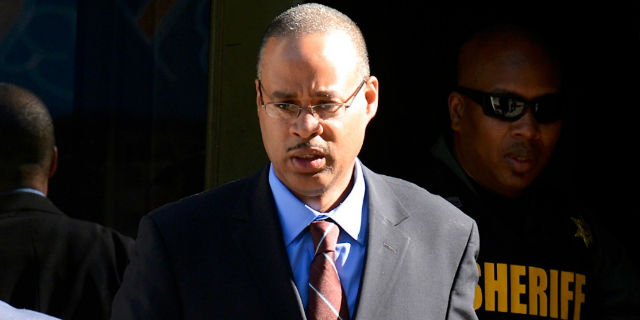
Now that a Baltimore City Police Department internal probe of officer Ceasar Goodson has concluded with his acquittal for his alleged misconduct in the death of Freddie Gray, outrage and other questions continue to linger about how Gray sustained what would be fatal injuries on the day he was arrested on Baker street in West Baltimore several years ago. A tragic death that resulted in city wide protest and riots that made national media, has in many ways divided Baltimore’s citizens, politicians, clergy, and its police department.
Authorities claim Gray who had many arrest for petty drug soliciting, intentionally inflicted injuries to himself to avoid having to go to a lockup at central bookings, a tactic police say Gray was known for. Despite amature video recorded by a witness’ cellphone at the scene of Gray’s arrest going public, and depicting Gray seemingly in pain and discomfort, police say it was all an act. Subsequently, Gray was driven around in a police wagon while Goodson made at least 5 stops before cops realized that he was unconscious and not breathing. Gray would succumb to a severed spinal cord a week later.
His death highlighted a long standing claim of police brutality by citizens from many communities just like Sandtowne Windchester where Gray was raised and lived. Anger over yet another unjust killing of a black man while in police custody ushered in tremendous fallout from a public with visceral hatred of its police force, and painted a backdrop of arson, violence, and youth clashes with police throughout the city. In a scene resembling events in Baltimore that followed the assassination of Dr. Martin Luther King Jr., Baltimore in many respects had seemingly grown impatient with its city government’s lack of accountability of its heavy handed police force.
While the media, police, and city government chose to focus on the unrest that followed Gray’s death by citizens during the riots and uprising, the central issue of exactly what happened to Freddie Gray became lost in a vacuum of political scapegoating and finger pointing which decried the obvious deficiencies within Baltimore’s social, economic, and political landscape that hand been simmering for decades. The criminal cases of police officers involved in Gray’s arrest being dismissed by Baltimore’s top prosecutor Marilyn Mosby, only added fuel to a fire that has yet to be extinguished in a city where many of its citizens are illiterate, and remain angered by policing that has historically brutalized them.
In a October 2015 blog article, A “Chink In The Armor” For BCPD Officers Charged With Killing Prisoner: Cop’s Account May Solidify State Case In Freddie Gray Death, I outlined the timeline of Freddie Gray’s arrest by city police. In the breakdown of the various stops that officer Goodson made, the stop at Freemont and Mosher streets is perhaps the most interesting. In a surveillance video obtained from a corner convenience store during a separate investigation by the Baltimore city sheriff department which was ordered by Mosby, Goodson is captured stopping the vehicle and going into the back of the wagon. Police say he was simply checking on Gray, but it is quite plausible that Gray may have sustained his fatal injuries during that time.
Gray who many experts argue was a victim of “contempt of cop” (targeted by police who have arrested him a number of times without meaning punishment) had been placed in the police wagon head first and faced down. Goodson who probably was annoyed by Gray’s behavior in the rear could have went inside of the wagon and stomped on Grays neck causing his spinal cord to be severed, and while there is no proof of such a claim in my argument, Goodson having made that particular stop (a stop that would not have been brought to light if Mosby hadn’t ordered a parallel investigation by the sheriff’s office) should have been under intense scrutiny to determine why he stopped. Lt. Rice had just ordered Goodson to stop and allowed officers to remove Gray to place shackles on him before being transported to Central Booking.
The Freemont and Mosher stop and the Druid Hill Avenue stop are both suspicious. They leave tremendous suspicion on police interaction with Gray during these time periods, while no officer deemed it necessary to seek medical attention for an arrestee in their custody. All of the stops made by cops while going in and out of the back of the wagon isn’t normal behavior or procedure. It is however common for Baltimore police to stop and pick up other prisoners while in transit to Bookings, but very unusual and suspect for a wagon to turn around in travel in an opposite direction to make a pick up, especially when the wagon is merely blocks away from Central Booking when a call is put out for a transport vehicle.
Some say Goodson was a scapegoat and simply transported Gray, while the injuries to Gray must have occurred during his arrest. A perspective that is highly disputable based on police standards related prisoner transport. Goodson had the right at anytime to call a medic for Gray, solely predicated on the fact that once he accepted Gray as a prisoner in a police vehicle he was operating, he obtained full responsibility of Freddie Gray’s well being. Officer Goodson was present at the scene where Gray was arrested and stood by while cops loaded a man who on the surface appeared to be injured, and was visibly crying out for assistance. Goodson should never have accepted Gray as a prisoner in his custody based on those facts alone.
Consequently, all of the stops that Goodson made while having custody and control of Freddie Gray goes a long way to establish a depraved attitude toward the security and well being of a prisoner in Goodson’s care. More alarmingly though, as it relates to criminal and internal police charges against officer Ceasar Goodson, is the unconscionable decision to arrive at an acquittal on all charges by a police investigative panel that amounted to nothing more than a body of self governance (a measure widely scrutinized by critics who argue that Baltimore police is constantly being allowed to police themselves). The panel’s weak rationalization of blaming the police department’s failure to widely disseminate a new departmental memo regarding seat-belt requirements for all prisoners being transported, is regarded by many within the public as a disturbing basis for letting Goodson off the hook for his role in the death Gray’s death.
At the very least Goodson was expected to receive some punishment surrounding the entire Gray matter. Goodson failed to not only follow police procedure (failure to notify all personnel regarding the seat-belt policy doesn’t mean Goodson, who should have known the policy regardless, doesn’t mean he was unaware), he failed to follow a direct order given by Lt. Rice, who directed him to transport Gray to Central Bookings. If there ever was a person to use as a fall guy, Goodson was well positioned to take such a hit, but the fact that none of the police officers involved in the Freddie Gray matter have ever been held accountable, speaks volumes about the culture of policing in Baltimore that has been long decried by citizens as a brutal and heartless agency run by thugs.
Advocates and others who support the police will try to move on from the tragedy that resulted in the death of Gray, who himself had a troubling upbringing. The victim of lead poisoning as a child created developmental issues for Freddie Gray and his twin sister all of their lives, and prior the circumstances that resulted in his senseless death being national news, the story of Freddie Gray’s life was perhaps the most tragic story told. Now those who reject the posture from the public seeking accountability for brutal cops, are using the Freddie Gray story to rationalize a spike in Baltimore’s current climate that has seen a spike in violent crime, but those educated on Baltimore’s police know that Gray’s case and current crime are like apples and oranges, because despite much of the innuendo and other hyperbole being spewed about Freddie Gray’s character, he was never convicted for any violent crimes.
So, while the political cat and mouse continues with Baltimore’s version of a national epidemic (police brutality), the scars of a city’s pain will forever be seen through the tragic story that unfolded on Baker street in Baltimore’s historic community of Sandtown-Winchester, when cops failed to assist a man name Freddie Gray who called out for help while in their custody. More importantly, what happened when officer Ceasar Goodson entered the back of the police wagon with no one around to bare witness, should be facts about Gray’s story that we should equally remember, and stamped within our hearts and minds for ever.
The People’s Champion
I’m Crime Writer David Adams
A Self proclaimed geek, Sympathizer for the homeless, Social Change Advocate, Crime Blogger, Promoter of Awareness for Missing and Exploited Children, and a mobile technology enthusiast. A recognized Journalist and Human Interest Writer championing the plight of the masses whom are without a voice of their own.
More Posts - Website
Follow Me:




You can
leave a response, or
trackback from your own site.

 RSS Feed
RSS Feed Twitter
Twitter




 Posted in
Posted in 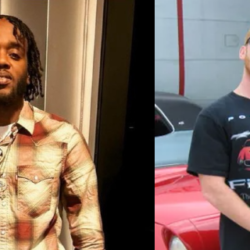

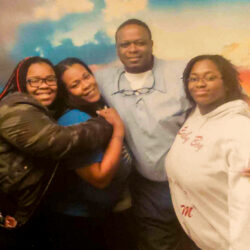
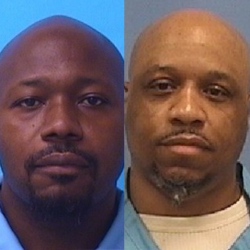
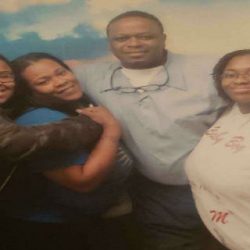



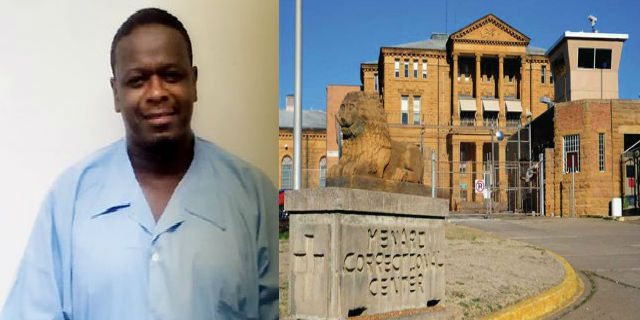
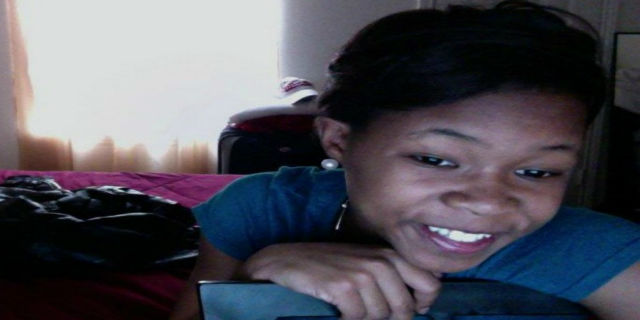



Kevin Junker
I found a great…
With thanks! Valuable information!
Black on black in the Charg I’m creepin’ Rub me the right way, you might get a genie B.o.B, black Houdini